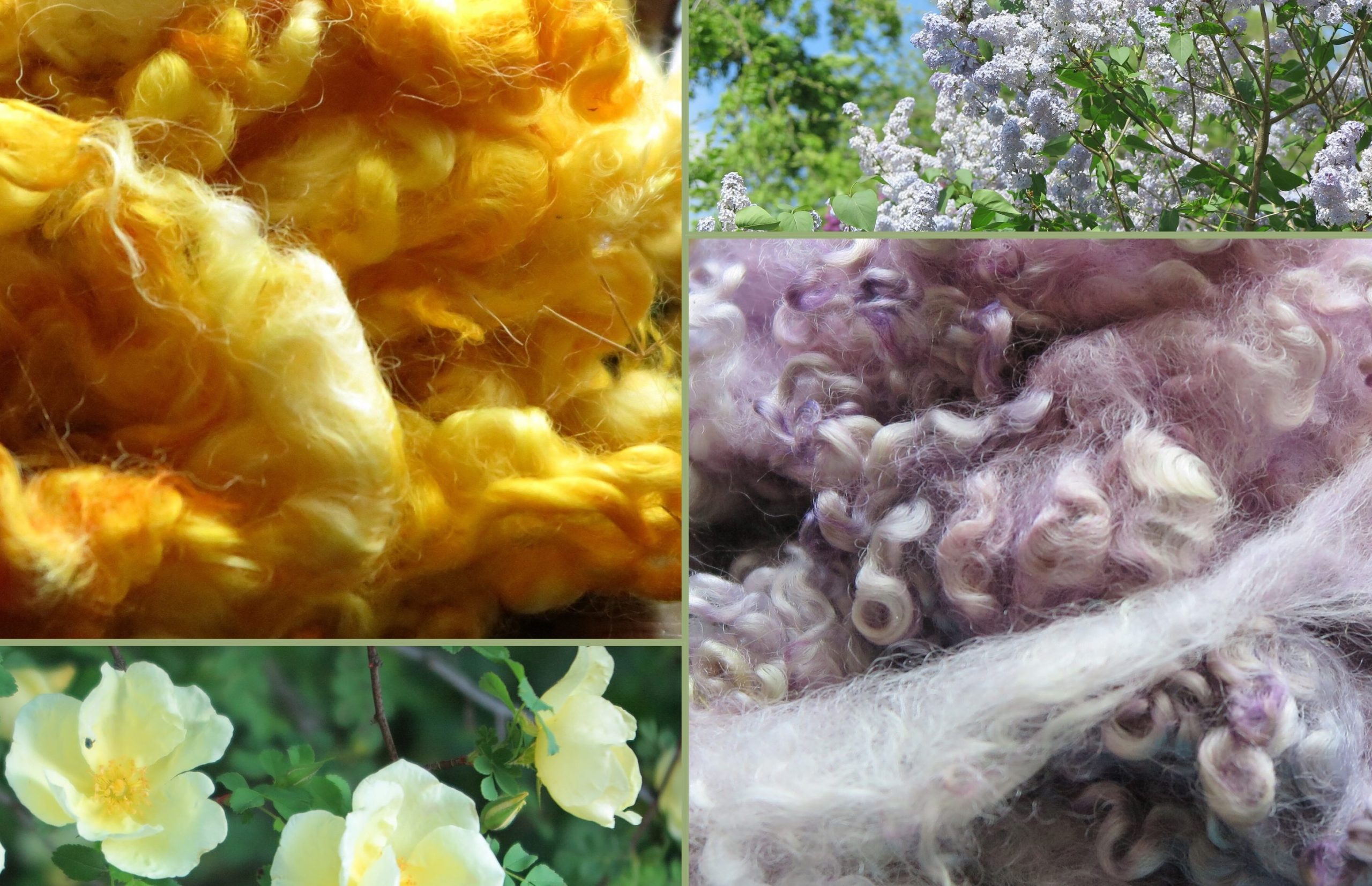After China and Tibet, my sister and I headed off to explore more of the Pacific in the Regenstein Halls of the Pacific. I was happy to find this exhibit was open, as the Field Museum website indicated that it might be closed until later that week. I’m not sure if there may have been some things they were still planning to update or not.
The exhibit opens with some modern wedding dresses, combining older textile traditions with modern (and more Western) styles.
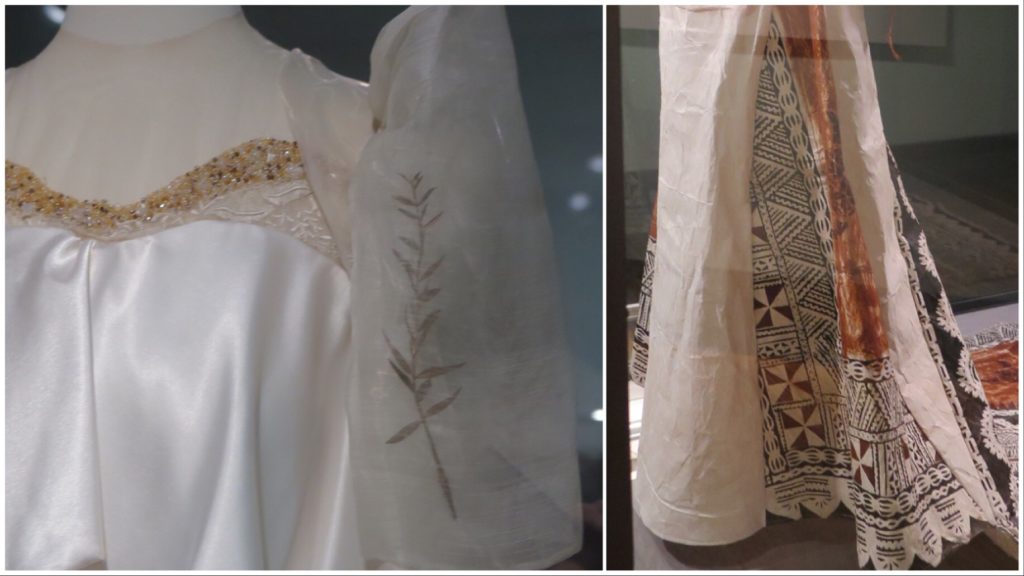
The Fijian wedding dress (right) is made in part with traditional tapas (bark cloth) and stencil designs, while the Philippine dress (left) includes traditional pineapple fiber cloth – piña. I didn’t realize until recently that pineapples were introduced to the Philippines, and Filipinos adapted their existing fiber and textile techniques to the new plant available.
You move from there to the museum’s collection of older itmes, most collected in the later 19th or early 20th century.
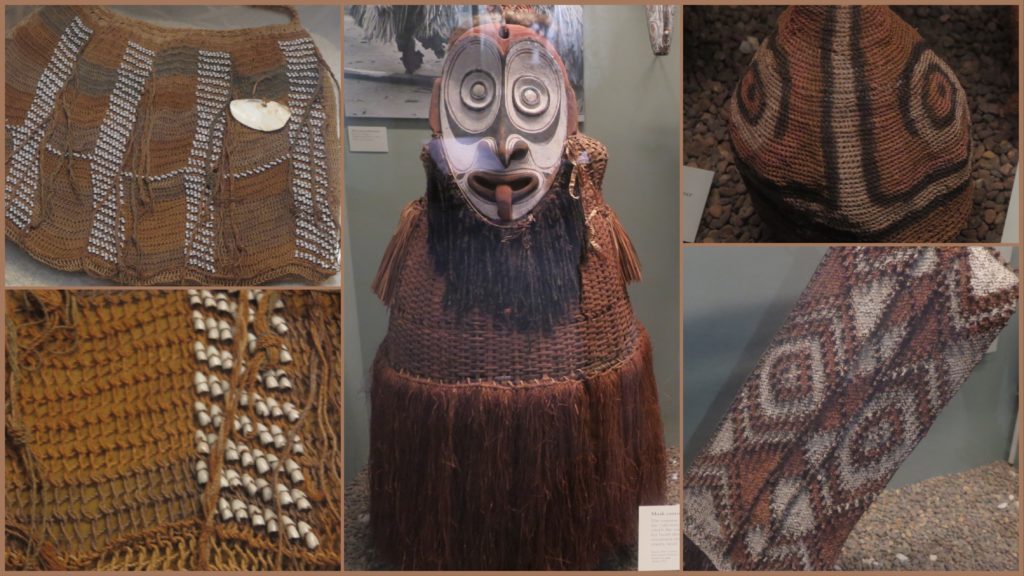
Above are a purse, a mask, a man’s cermonial cap and a woman’s hood. The cap was made by a man to wear while he was in seclusion during key ceremonies – he would wear it when he came out to get food from drop points arranged with his family.
There isn’t much about what materials any of these were made with, though I suspect it varies, and some of the items clearly use multiple materials including beads. I really like how the bag has subtle changes in the colors of the threads. It looks like each color continues behind one column of beads, so I think the front is four panels of netting stitched together.
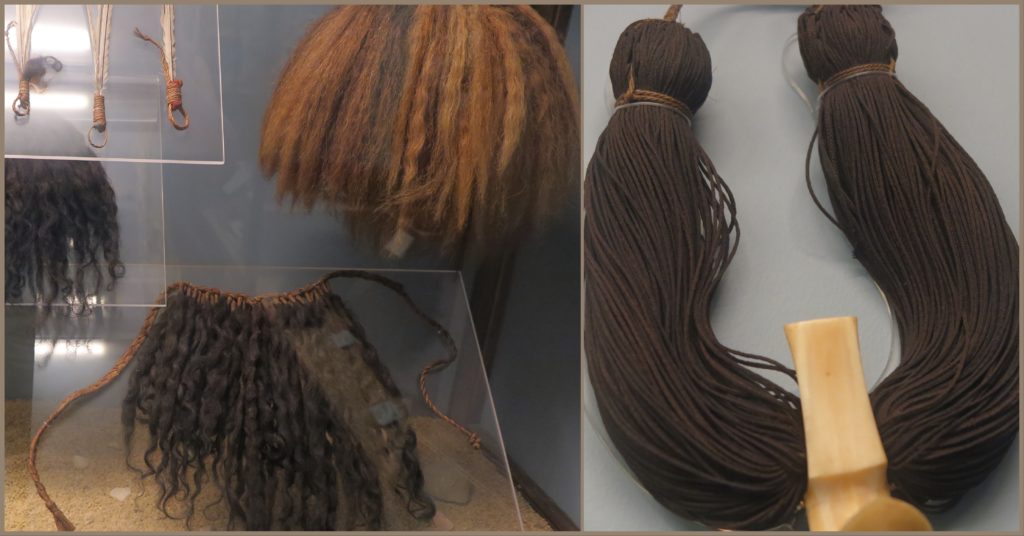
Above are ankle ornaments and a necklace made with human hair. The ankle ornaments are from the Marquesa Islands and were used in dances. The necklace is from Hawaii and would have been worn by a chief (male or female). I was struck by the contrast in how the hair was used in each. One emphasizes the texture and movement of the hair, while the other is carefully braided into many small strands.
I was also interested to see items in flax and wool:

These cloaks are from New Zealand, which has had sheep since the 18th century.
Lastly – part of the exhibit showed more about tapas (bark cloth) and how it’s made:
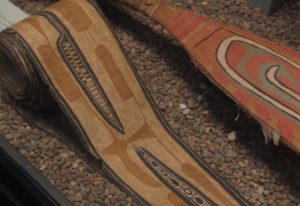

On top are loin clothes and below is a larger display of rugs and tools for making tapas. It’s more like making paper where the materials are pressed/beaten together to create the cloth. For tapas, the bark of mulberry trees is used. Strips are beaten out to make them thinner and wider before being pressed together. In the lower right is a carved piece of wood with the designs. Tapas is laid over it and the design rubbed onto the tapas. It’s painted over again after its taken off the stencil to make it sharper. The resulting cloth is used for pretty much anything you might expect woven cloth to be used for.
Honestly, the 45 minutes or so we had to go through this part of the museum wasn’t really enough to absorb it all.
